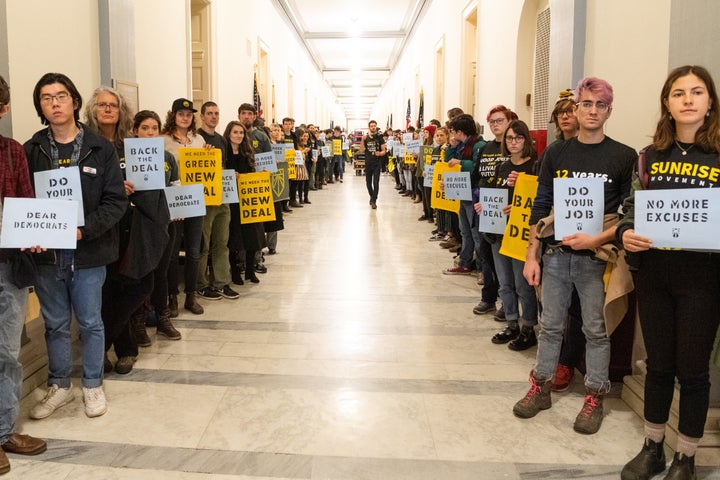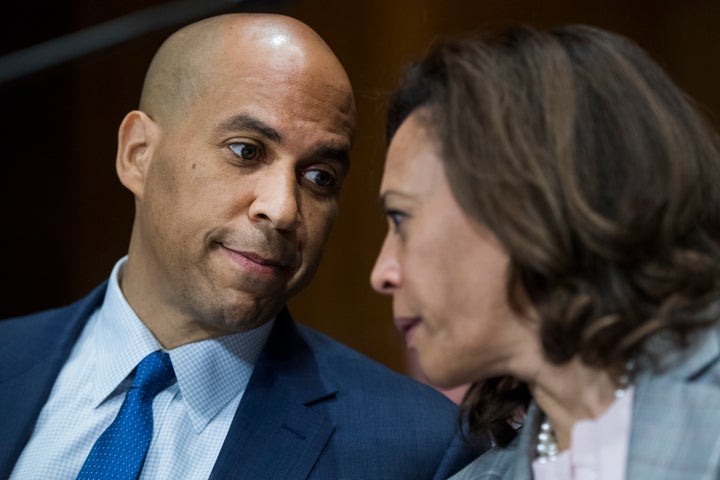
There were several moments in 2018 when it was difficult to remain hopeful for any sort of meaningful action on climate change. The Trump administration has worked tirelessly to impede a transition to a green economy with actions ranging from opening the long-protected Arctic National Wildlife Refuge to drilling, to implementing tariffs on imported solar panels, to the president’s own denial that humans are causing unprecedented warming ― despite his own government’s comprehensive report stating the opposite.
Given the severity of the challenge we now face, it would be easy to see 2018 as an irreversible step backward, the sealing of our already grim fate. Yet despite all this, 2018’s midterm elections showed that politicians do have a path forward with American voters when it comes to comprehensive action on climate. The message, as it turns out, isn’t any sort of brilliant political calculus either. It’s a return to kitchen-table issues: jobs and economic opportunity.
The seats that Democrats picked up across the country this fall were largely won by reassuring voters that they are willing to fight for workers young and old, and ensuring that they will have affordable health care and gainful employment. The Green New Deal, a bold proposal to put Americans to work building green infrastructure, modeled after Franklin D. Roosevelt’s New Deal, was a central campaign issue for a progressive faction of the newly elected Democrats. At first, establishment Democrats scoffed at the Green New Deal as some ultraleft policy demand, but the more the idea of job creation through building renewable energy and climate-adapted infrastructure were floated with the American public, the more support they gained. Not to mention, the notion of slowing rampant income inequality and leaving no American behind sits favorably with working people throughout the nation.
The Green New Deal is a unifying political message that gets back to the basics of creating an economy that works for all people and protects the planet as a result. In fact, a recent poll by the Yale Program on Climate Change Communication and George Mason University showed that a staggering 93 percent of Democrats and 64 percent of Republicans agree with the basic components of the Green New Deal (our own poll data from earlier this year echoed those findings, showing the American public’s overwhelming preference for renewables over fossil fuels). The only other thing that gets such a high level of bipartisan agreement is that Democrats and Republicans can’t agree on basic facts.
It’s now important that we take advantage of this consensus, and fast. The 2018 midterm election should be a clear lesson for the still-forming roster of 2020 presidential contenders: What Americans crave the most is a government that works for the people, not just some of the people. Americans, first and foremost, want their basic needs met and candidates who are willing to listen to their concerns and then work to address them in Washington.

A bold plan to transition to a green economy will both put Americans to work and reduce pollution that keeps millions of the working poor sick and trapped in poverty. Kids will miss fewer days of school due to respiratory illness, parents will miss fewer days of work, and working a full-time job will pay a livable wage. And action to reduce greenhouse gas emissions is the only way to lower the probability that devastating fires, hurricanes and floods will become even more frequent occurrences. For the kinds of climate-related impacts that we have already endured ― and will continue to ― we need coordinated infrastructure and systems in place to ensure that Americans are prepared and protected.
In addition to the Green New Deal, candidates must stress that their opponents’ inaction on environmental issues hurts American workers and their communities. Florida’s former Gov. Rick Scott won a Senate seat this fall even though his gutting of Florida’s water management budget by hundreds of millions of dollars likely created the conditions for the unprecedented red tide event that cost Florida’s tourism economy over $90 million in one summer. His opponent, then-Sen. Bill Nelson, hardly mentioned that Scott’s recklessness and complete disregard for Florida’s environment and waterways was a direct blow to small businesses, fisherman and millions of Floridians whose livelihoods depend on the health of the ocean. Meanwhile, evidence shows that 30-year Congressman Dana Rohrabacher’s notorious denial of climate issues potentially cost him his seat in California’s 48th Congressional District this fall after he routinely ignored the issues plaguing his constituents ― including rampant flooding in Orange County’s Balboa Island that has resulted from sea-level rise.
As now-Rep. Alexandria Ocasio-Cortez recently said in a tweet, “People are starting to realize our issues aren’t left and right, but top and bottom.” That perfectly expresses the opportunity Democrats have in 2019, to set the stage for the 2020 race and run as a party that has real solutions to put people to work and propel our economy, and our planet, into the future.
There’s no time to waste.
Monica Medina and Miro Korenha are the founders and publishers of Our Daily Planet.